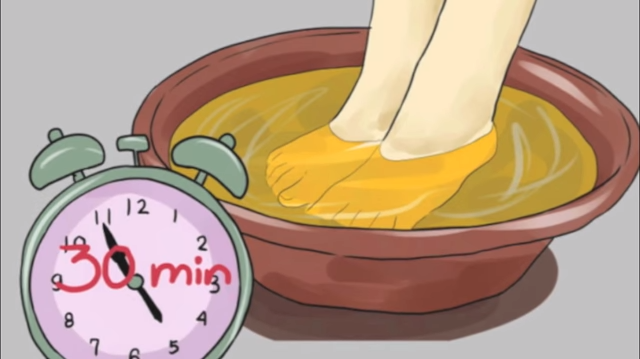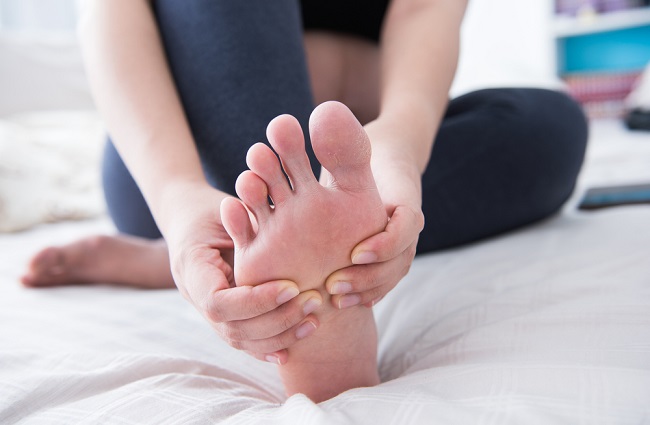7 benefits of soaking your feet in vinegar

Vinegar has long been a standard solution to many aches and pains. When it comes to your feet, vinegar has been known to help with fungal problems, foot odor, athlete’s foot, and more. The acidic properties of vinegar can even help soften dry skin on your feet, helping against cracked heels just by soaking your feet in vinegar.

The most common vinegar used to soak your feet is plain white vinegar, available at any grocery store. In addition to using white vinegar, other vinegars may be perfect for what ails your feet.
These instructions for soaking feet in vinegar can help you with painful and annoying foot problems to eliminate, until you get soft feet in a matter of weeks.
Table of Contents
7 benefits of soaking your feet in vinegar.
No matter what type of vinegar you use (although organic apple cider vinegar is best), make sure the tub or container is spotlessly clean before you begin.
Don’t worry about the vinegar smell, as it will soon dissipate. The following recipes for a good healing vinegar foot soak have proven that your feet will look and feel better.
1. Soak feet in vinegar for fatigued feet.
If you’ve been on your feet all day, this soothing mix will help ease aches and pains. In a large bathtub, combine 1 cup of Epsom salts, 1 cup of sea salt, 1 cup of vinegar, and ½ cup of dried lavender.
Mix everything together with large amounts of warm or hot water.
2. For athlete’s foot.
Athlete’s foot can be a smelly, itchy mess. Relieve it with five cups of apple cider vinegar for every gallon of water used. Soak your feet for at least ten minutes to help relieve the itchiness and itching caused by athlete’s foot.
Do this every day for ten days. When you remove your feet from the water, finish with a cotton ball dipped in vinegar and wipe it all over the affected areas.
3. Soak them in vinegar for a bad smell of feet.
To help combat foot odor, combine two parts water with one part vinegar in a foot bath. You can use apple cider vinegar or white vinegar for this.
Add several drops of thyme oil to the water as well – this helps alleviate the smell. Also, you can try using a mixture of four cups of water, four cups of vinegar, and half a cup of baking soda dissolved in the liquid.
Use this foot soak in vinegar for 15-20 minutes. Remember that you should never use this recipe if you have open sores, scratches or cuts on your feet. Make sure to dry your feet well, especially between the toes.
4. Soak feet in vinegar for warts and corns.
Vinegar is also known as acetic acid, which is a mild exfoliator. This can help decrease the appearance of corns and warts. Mix equal parts of white vinegar and hot water, then soak your feet.
You can also alternate between soaking by soaking your feet in hot water for five minutes to soften them, then soaking in pure apple cider vinegar for 15 minutes to work on corns and warts.
Also, you can apply a cotton ball soaked in vinegar to the problem area, put on a gauze or bandage and leave it there overnight.
Also, you can use a delicate brush on the parts of your foot that are very sensitive, such as the top of the foot or on the ankle. When you’re done, use a good moisturizer on your feet. Do this twice a day for smooth and supple skin.
6. For nail fungus.
Mix two parts of water with one part of vinegar and soak your feet in it for 15 minutes every day. Apple cider vinegar is best as it has anti-fungal properties.
Also, you can use a splash of Listerine in the water to help speed up the healing of the fungal problem.
7. For regular foot care use vinegar.
For daily foot care, try a foot soak made from two gallons of warm water, 1 cup of white vinegar, and a few drops of essential oils. Soak for 45 minutes twice a week, then rub your feet gently with a pumice stone.
Don’t forget to hydrate afterwards. And remember, never use the same solution more than once – always use a fresh solution each time.
Warnings about soaking feet in vinegar.
Although soaking feet in vinegar can be very good for most people, there are times when it should be avoided.
If you have open wounds, scratches, or cuts on your feet, don’t use the vinegar foot bath. If you have diabetes or other conditions that affect blood flow to your feet, be very careful when you have a foot problem.
In most cases, you will need to consult a doctor and get an opinion before using vinegar on your feet in this way. If you use the vinegar soak on a regular basis and start to notice a rash, redness, itching, or irritation, these water baths can be irritating to your feet.
This is especially true if you have one of the problems listed above. In order to solve this problem, you can reduce the frequency of using this treatment, or you can decrease the amount of vinegar in the solution until it feels comfortable for you.
But if the irritation doesn’t go away, it’s time to stop soaking your feet in vinegar and speak with a doctor before resuming them.


